アイヌ文化
豊かな自然と共に継承されてきた二風谷アイヌ文化
The distinctive Nibutani Ainu culture has developed
and been handed down along with the nature’s bounty.
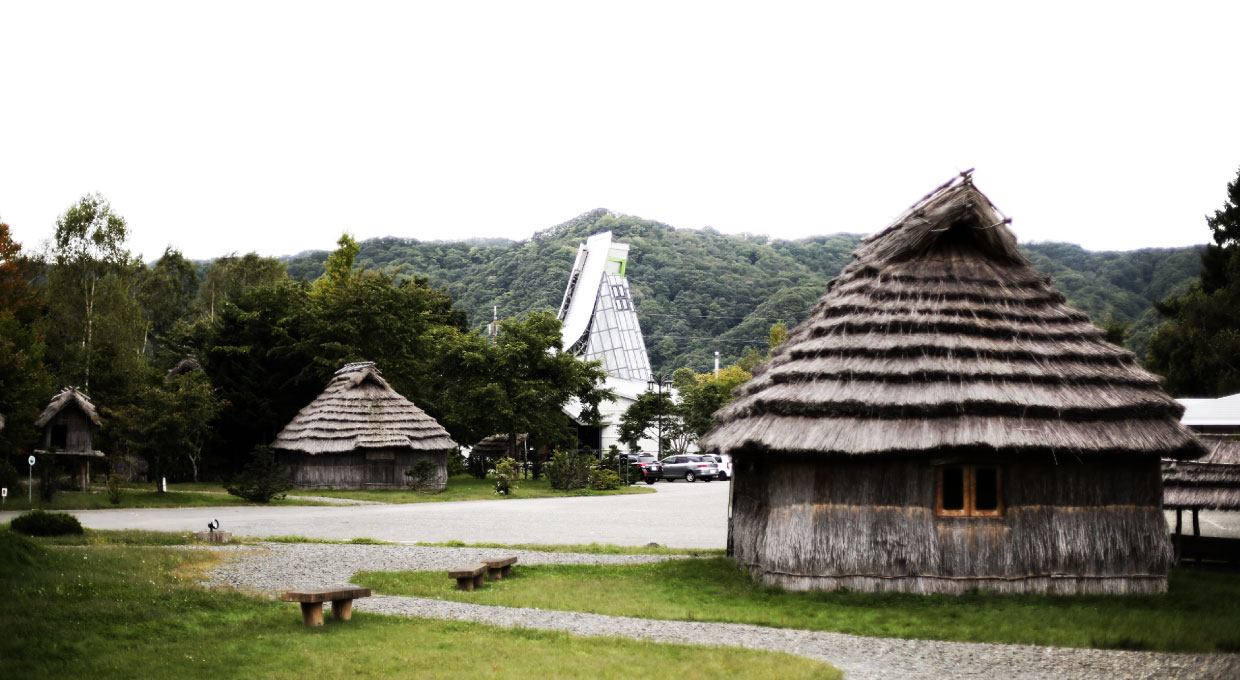
アイヌの伝統が色濃く残る地域として広く知られる平取町二風谷。アイヌ語では「大森林」「野の林」などと解釈されています。
光あふれる春から夏、彩り深める秋、そして白い世界へと、四季折々の表情を豊かに映す河川や森林で自然を尊び、学び、共に生きる沙流川流域のアイヌ文化が現在まで脈々と引き継がれています。
アイヌ文化伝承を目的に復元されているチセ(家)は、その象徴的な存在。コタン(集落)でチセを建てる前後には厳粛な儀礼が行われます。二風谷では、チセ建築の技術継承をはじめ、祈り言葉、作法、儀式に伴う用具・供物づくりなどが、定期的に行われる継承活動を通して大切に守り伝えられています。
アイヌ文様とアイヌ口承文芸、アイヌ語地名は、2001年に北海道遺産に選定されている他、代表的な工芸品である「二風谷イタ」(盆)と「二風谷アットゥㇱ」(樹皮の織物)は、2013年に伝統的工芸品に北海道で初めて指定されました。アイヌの生活様式や精神性と合わせて、あらためて二風谷の伝統工芸、アイヌ文化に対しての関心が高まっています。
Nibutani in Biratori is widely known as a region which strongly keeps the Ainu tradition. The word Nibutani is thought to come from the Ainu word meaning “large forest” or “forest of the wood”.
Ainu culture in the Saru Valley has been passed on to today. The Saru River and the forest seasonally express themselves: the sun brightly shines from spring to summer, leaves deepen in autumn, and after that the world becomes white. People have valued, learned from, and lived together with nature.
To pass on Ainu culture, chise (houses) have been restored, and they symbolize Ainu culture. Solemn ceremonies are held before and after chise are constructed in the kotan (village). In Nibutani, regular activities are done to preserve Ainu prayers and mannerisms. Chise building techniques, ritual equipment carving, and ceremonial cooking are also practiced.
Ainu patterns, oral literatures, and place names were selected to be part of Hokkaido heritage in 2001. Nibutani Ita (tray) and Nibutani Attus (bark textile), the most popular traditional crafts, were designated as Japan Traditional Crafts in 2013. This was the first time crafts from Hokkaido were chosen. Interest in the traditional crafts of Nibutani and Ainu culture, way of life, and spiritual nature is growing.
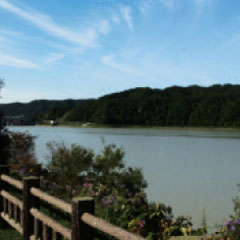
沙流川
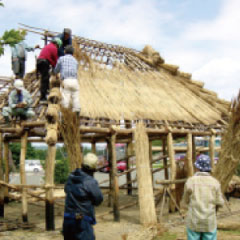
チセの建築作業
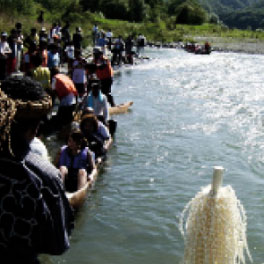
チㇷ゚サンケ
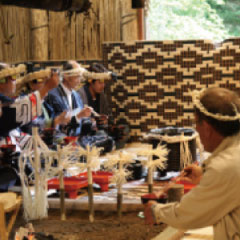
カムイノミ
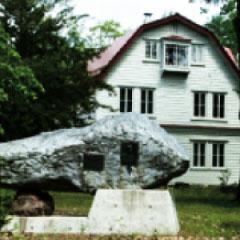
旧マンロー邸
沙流川流域では二風谷遺跡の発掘(1983年-1985年)など、数多くの考古学的調査をとおして17世紀前後のアイヌ文化の暮らしが解明されています。数百年前の物流、建造物の構造推定、動物送り儀礼などを考察するための貴重な成果が得られました。
また、二風谷にはオプㇱヌプリ(穴あき山)やウカエロㇱキ(通称クマの姿岩)など、人文神オキクルミの伝承地が残されています。こうしたアイヌの口承文芸を学ぶ上でも意義深いスポットが流域に点在しています。
沙流川流域はアイヌ文化研究の拠点として、多くの研究者が行き交う土地柄でもあります。明治時代のJ.バチェラーや金田一京助、吉田巌をはじめ、昭和初期にはN.G.マンローが二風谷へ移住し、数多くの研究成果を世に残しました。
このように世界的に見ても、貴重なアイヌ文化研究の蓄積がある沙流川の暮らし。「二風谷アイヌ文化博物館」「沙流川歴史館」「萱野茂二風谷アイヌ資料館」などで地域の歴史に思いを馳せながら、伝統的な手作り工芸品店&工房が並ぶ「匠の道」で、現在活躍する工芸家たちの貴重な作品やこだわりに、どうぞたっぷりとふれてください。
In Saru Valley, the Ainu people’s way of life around the 17th century has been revealed by many archaeological surveys such as the excavation of the Nibutani site (1983-1985). From those surveys, valuable results were gained to better understand the trades from hundreds of years ago, the architecture of the buildings, and the ceremonies to send animal spirits back to the world of the gods.
In Nibutani, traditional places related to okikurumi kamuy (the culture giving god), such as opsunupuri (mountain with a hole), and ukaeroski (bear-shaped rock) remain. Saru River is dotted with many of those significant spots which help us understand study Ainu oral literature.
Saru Valley is where many researchers come and go to study Ainu culture. Study results were left by famous researchers from the Meiji era, such as J. Batchelor, Kindaichi Kyosuke, Yoshida Iwao. In the beginning of the Showa era, N.G. Munro, another researcher who left many results, moved to Nibutani.
There are many accumulated studies on Ainu culture from the Saru Valley which people worldwide find valuable. Imagine the local history when visiting the Nibutani Ainu Culture Museum, the Historical Museum of the Saru River, and the Kayano Shigeru Nibutani Ainu Museum. Walk around Takumi no Michi (the artisan’s road) lined with traditional craft shops and workshops, and experience the valuable works and passions of the active artisans.
詳しくは下記リンクをご覧ください。
この記事に関するお問い合わせ先
文化財課 文化財係・博物館管理係
〒055-0101
北海道沙流郡平取町字二風谷55番地(平取町アイヌ文化博物館)
電話番号(代表):01457-2-2892
ファックス番号:01457-2-2892
お問い合わせはこちら









更新日:2024年04月18日
公開日:2024年04月01日